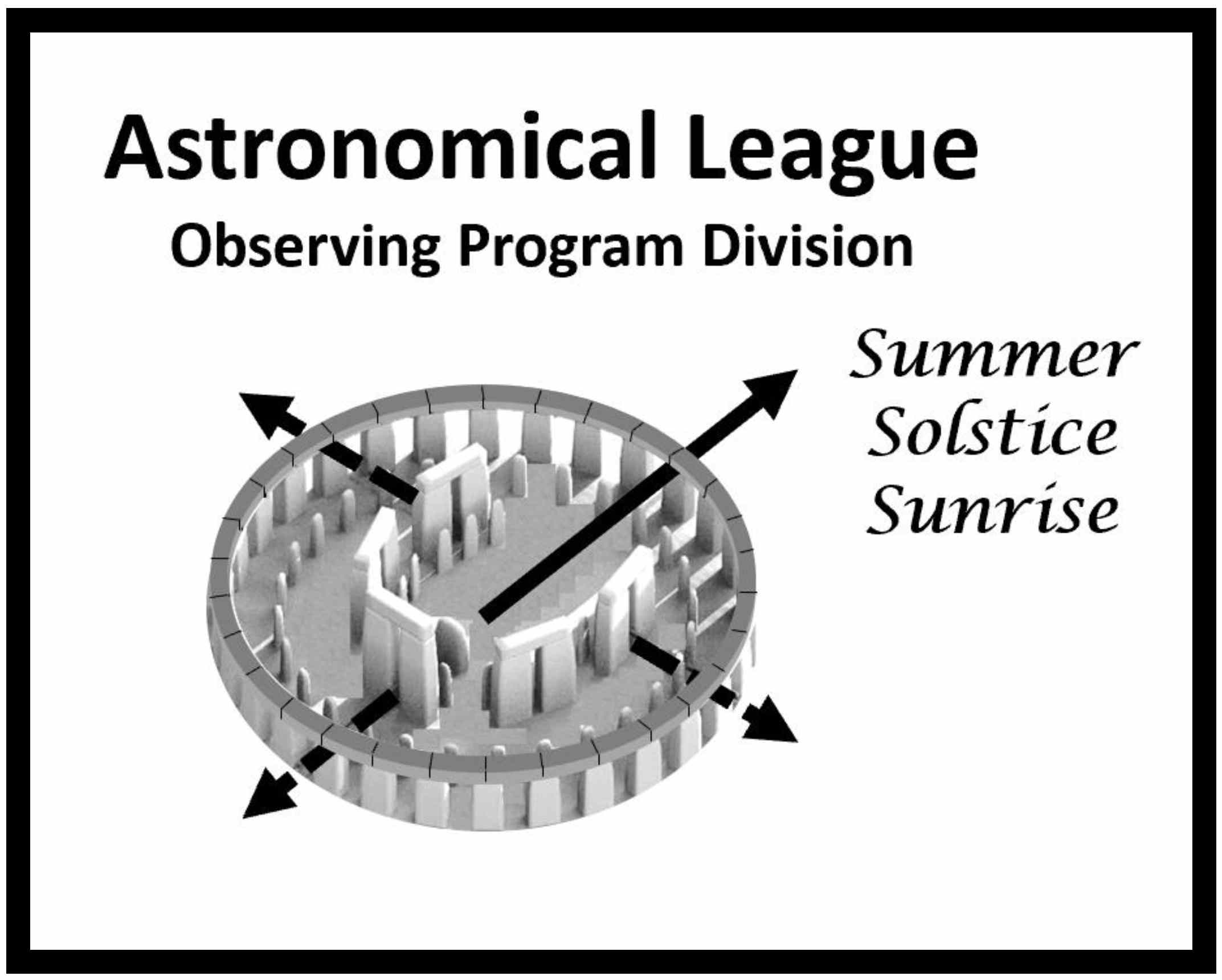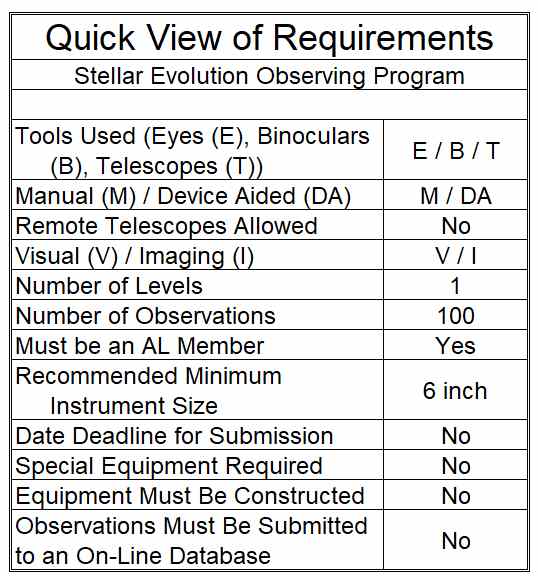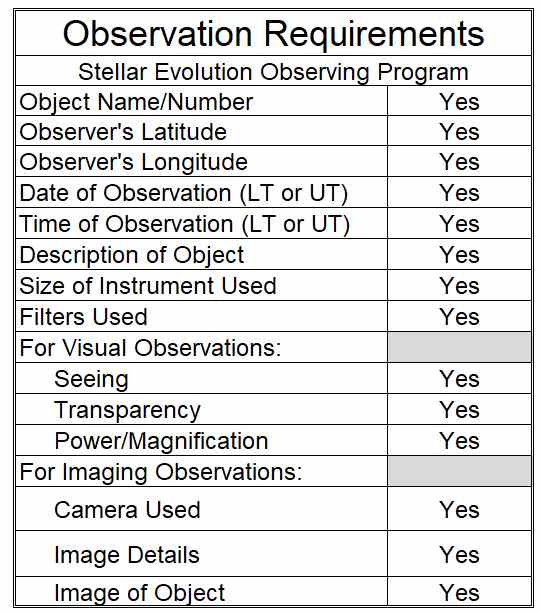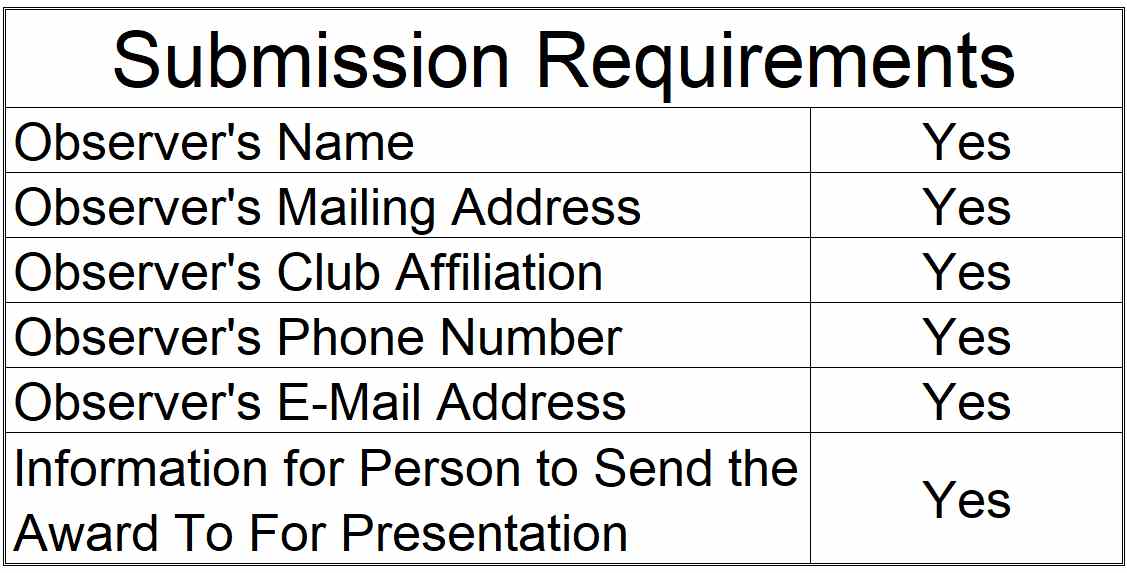Stellar Evolution Observing Program Coordinator:Bill Pellerin |
 |
IntroductionEverything that you see in the night sky is visible to you because of light from a star. The stars themselves, nebulae, planets, moons, are visible because of starlight. Even dark nebulae are visible because they block the illumination of stars or other objects lit up by stars. We exist because early generations of stars generated the elements that make up our planet and the chemical elements required for life. It is not an understatement to say that we exist because stars exist. The Stellar Evolution Observing Program will be of interest to beginning observers as well as more experienced observers. The purpose of this Observing Program is to develop in the observer an appreciation for the most common objects that they see in the night sky – the stars. Stars, like us, are born, live their lives and end their lives. Understanding this ‘stellar evolution’ is important to understanding how the universe works. Some of the objects in this Observing Program’s list are on other Astronomical League observing lists, so you may have already observed some of the objects. In addition to performing the observations, you will have enough information to put each object into the context of stellar evolution. In the end, observing is something you do in your mind. It’s not about simply seeing the object, it’s about understanding what the object is, why it is important, why it is interesting and how it fits into the story. Once you do, you’ll be able to say ‘Oh, WOW’ for objects that you may have overlooked or may have underappreciated in the past. |
 |
Many of the objects in this list are easy naked eye objects, but some will require a small telescope and some patience to find. Not all stars are bright, and end-of-life stars can be particularly dim. The bright objects will generally be visible from a home in the city or in the suburbs, the dimmer objects will require reasonably dark, but not pristine, skies. A few of the objects will be better seen under clear dark skies with a large telescope.
Requirements and Rules
This certification is available to members of the Astronomical League, either through their local astronomical society or as members at large. If you are not a member and would like to become one, check with your local astronomical society, search for a local society on the Astronomical League Website (click here), or join as a member at large (click here).
| The observing list for this program is divided into several sections each illustrating a separate phase of stellar evolution. To meet the objective of this Observing Program it will be necessary for you to observe the objects in all of the categories.
A total of 100 objects must be observed to complete this Observing Program. A log sheet that meets the requirements of this Observing Program is at the end of the on-line manual. The observations must be made in the context of completing this Observing Program; Objects that you have already observed must be observed again. Your observing log sheet must include the following on each of the objects:
|
 |
As part of this Observing Program you’ll be looking at, and understanding the HR diagram. (An HR Diagram can be found here.) This diagram was developed independently by Ejnar Hertzsprung and Henry Norris Russell in about 1910. Although there is a lot to be gained from the study of the HR diagram, its concept is easy. The X (horizontal) axis of the chart is temperature of the star (color and temperature are the same thing) and the Y (vertical) axis of the chart is the luminosity of the star. The luminosity is the intrinsic brightness of the star. A star’s magnitude is the brightness of a star as seen from earth, so a high luminosity star that’s very far away may look dim to us and a lower luminosity star that is nearby may appear brighter to us.
Of course, I hope that you will enjoy learning about stellar evolution and observing the objects in this Observing Program as much as I have enjoyed developing the program.
Submitting for CertificationTo receive your certification, send your observation log to the Stellar Evolution Observing Program Coordinator. Include your name, mailing address, email address, phone number, society affiliation, and to whom the certification should be sent. |
 |
Stellar Evolution Observing Program Coordinator:Bill Pellerin |
Upon verification of your submission and of your active membership in the Astronomical League, your recognition (certificate, pin, etc.) will be sent to you or to the awards coordinator for your society, as you specified. Your name will also appear in an upcoming issue of the Reflector magazine and in the Astronomical League’s on-line database. Congratulations. Good luck with your next observing challenge.
Links:
- “Observing Stellar Evolution” Manual (PDF file)
- “Observing Stellar Evolution” Object List (PDF file)



